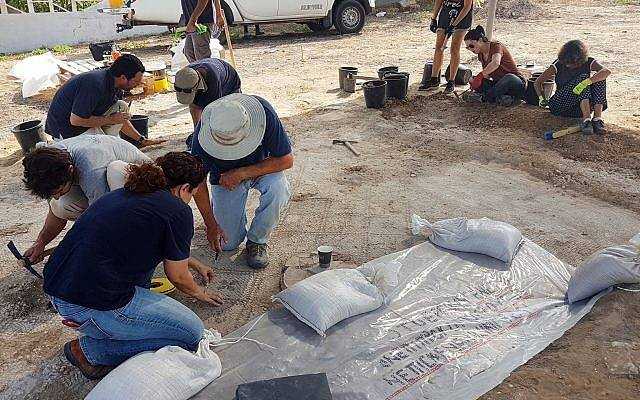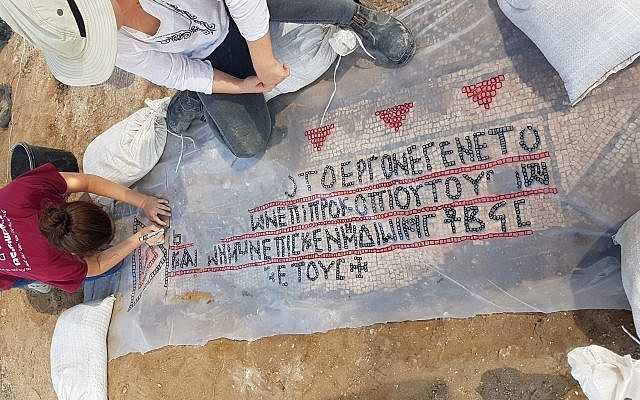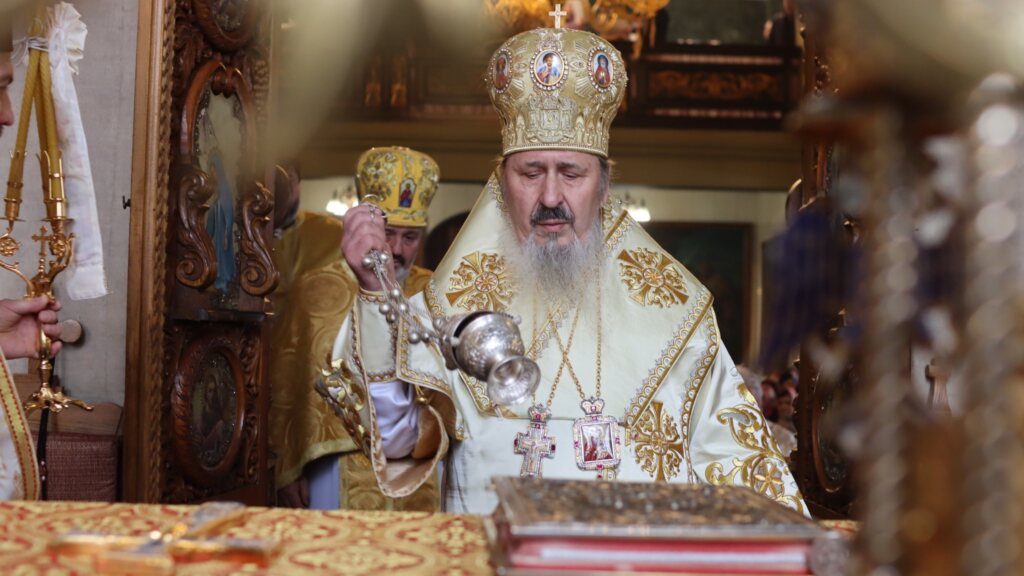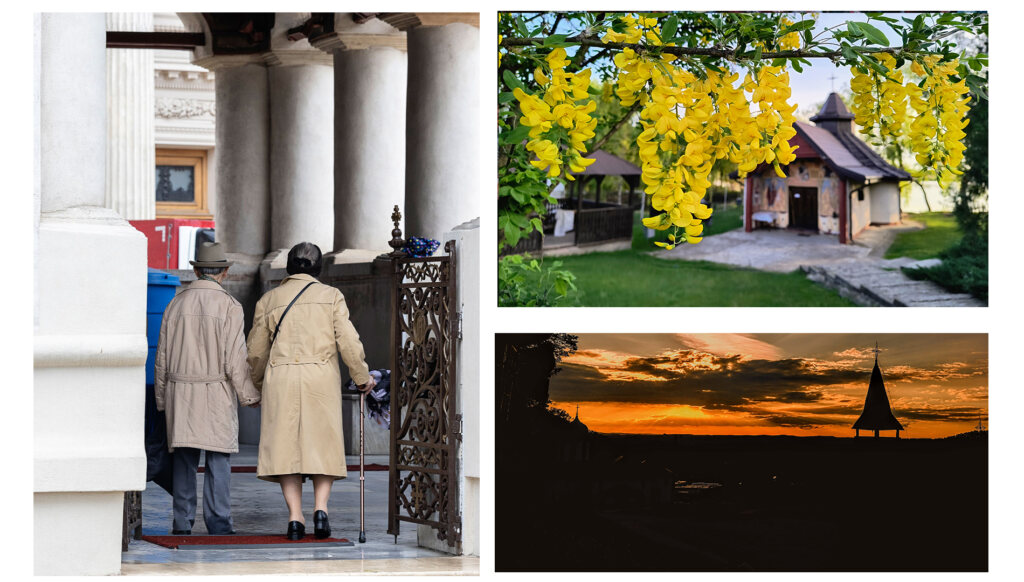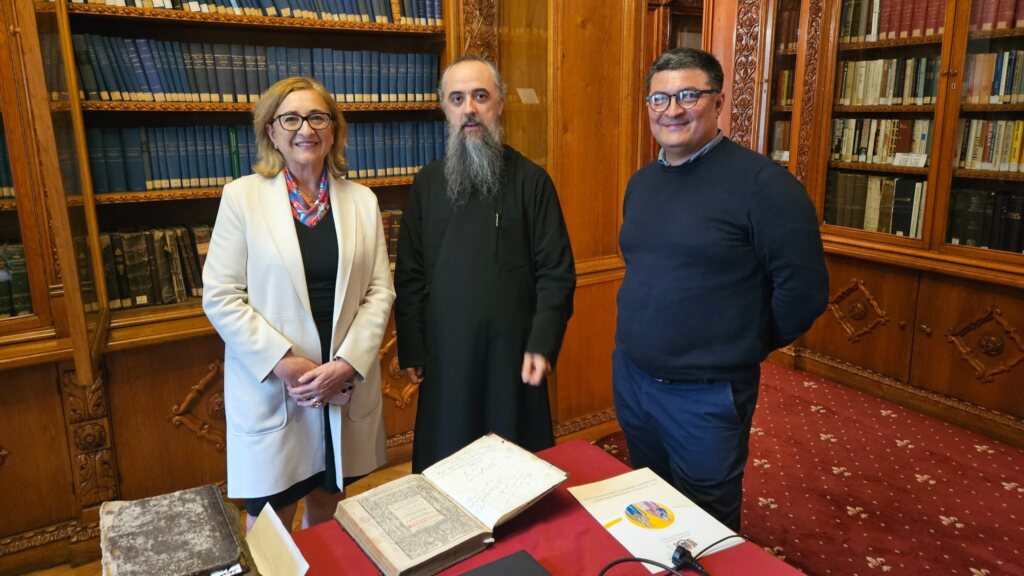The Patriarch of Jerusalem and clerics from the Holy Land participated on Thursday in an open-air Liturgy officiated at the ruins of a Byzantine basilica near Ashdod. The patriarch officiated a Trisagion for the repose of those mentioned on a recently found mosaic on the site – among them, a bishop who participated in two Ecumenical Councils.
The Divine Liturgy was officiated by Archbishop Teophanes of Gerassa. Those commemorated at the Trisagion office were Bishops Herakleios, Procopios, Karos, Presbyters Gaianos and Stephanos, Deacon Maxim, Mothers Sophoronia and Euphrosyni, Deaconesses Severa, Theodosia and Gregoria.
Among the participants: Archim. Eudokimos, Spiritual Father of Saint Savvas’ Lavra, Archim. Ignatios, Hegoumen of Beit Sahour and Beit Jala, Archim. Constantine, Hegoumen of the Holy Monastery of Khozeva, Archim. Artemios, Hegoumen of Haifa, Archim. Leontios, Hegoumen of Rafeidia of Samaria, Archim. Marcellus, Hegoumen of Saint George in Lydda, Father Alexander Yasevitch of the Russian-speaking flock in Beer Sheva, Mr Shimon Katznelson, Vice Mayor of the Israeli city of Ashdod, archaeologists
After the office, Dr Alexander Fantalkin, professor at Tel Aviv University, guided the patriarch through the excavated part of the site. His Beatitude then spoke to the audience of the priceless value of the site.
“This church, established by Bishop Procopios in the 6th century, is important evidence of the fact that Ashdod, known then as Azotos, was among the principal cities on the coast during the Byzantine period,” he said, referencing the mentions of the city in the Old (Joshua 15:46) and New Testament (Acts 8:40).
The discovery of this Byzantine basilica, an important holy site for Christians, “is a testimony to the witness that the Patriarchate of Jerusalem has given down the centuries to our sacred history. As the oldest religious institution in the region, the Patriarchate has embodied this sacred history and given it legitimacy,” His Beatitude added.
A bishop who participanted in the 3rd and 4th Ecumenical Councils
“This site is both a holy site as well as a site of supreme historical and academic value. There is an existence of the Christian presence here even before this Church. We know that one of the bishops of this region, Bishop Silouanos, attended the First Ecumenical Council in Nicaea in the year 325. There are inscriptions at this church mentioning the name of Bishop Hierakleios, who participated in both the Third Ecumenical Council of Ephesus in 431 and the Fourth Ecumenical Council at Chalcedon in 451,” Patriarch Theophilos affirmed.
“We have here a site that, like Madaba and Megiddo, has the power to draw not only scholars but also tourists and pilgrims in large numbers. We have a treasure here that we must preserve and make accessible to the many hundreds of thousands of pilgrims who come to the Holy Land every year. As a site of such significant scientific and religious consequence, this site is of immense value to the City of Ashdod, and it is part of the common heritage of all humanity in the Holy Land,” continued the Patriarch of Jerusalem.
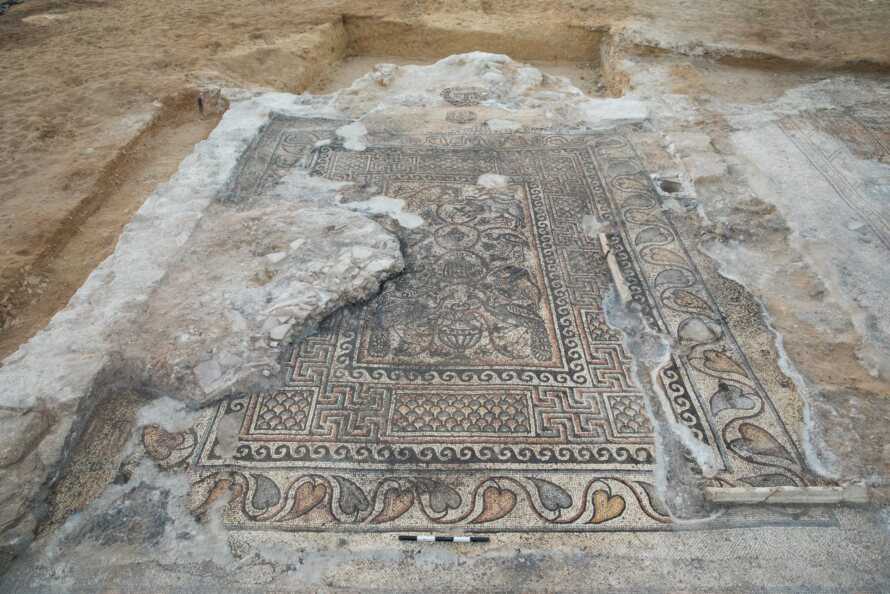
The site contains the graves of several women who bore the title of Deaconess.
“This confirms for us the existence of this office in the early Church. In addition to this, tombs of holy martyrs have been uncovered, which is proof that this place served as a liturgical gathering place before the 4th century,” the patriarch said. He emphasized that the discovery will attract numerous pilgrims from all over the world.
“The conservation and development of this site by the local authorities would strengthen the existing good relations between the State of Israel and the Patriarchate of Jerusalem, and, by extension, with the Christian world in general and with the Orthodox world in particular, such as the nations of Greece, Cyprus, Russia, Rumania, Bulgaria, Serbia, Georgia and others,” affirmed His Beatitude Theophilos.
Huge potential for religious tourism
Preserving the site and making it accessible to scholars and pilgrims “would be a living testimony of the history of this ancient city and would promote peaceful coexistence, tolerance, and mutual respect,” mentioned the patriarch, who also added that the Jerusalem Patriarchate pledges to support and assist in this work.
“May this place be a source of both knowledge and spiritual refreshment for generations to come,” concluded His Beatitude.
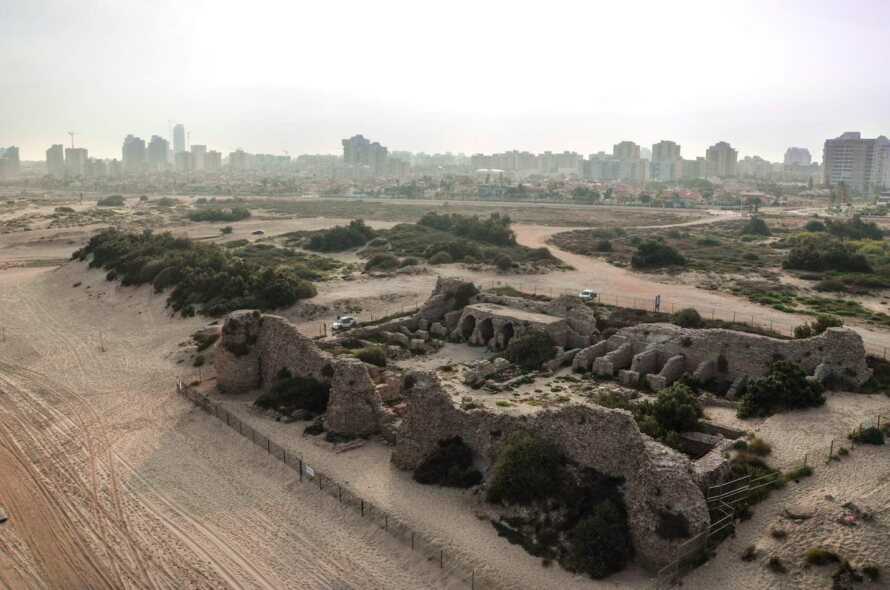
At the end of the event, its host, Archbishop Aristovoulos of Madaba, offered the participants fruit, refreshing drinks and boiled wheat.
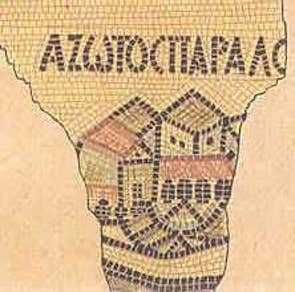
The City of Ashdod (Azot), whose ruins have recently been discovered, is represented on the famous mosaic of the Byzantine church in Madaba, Jordan (6th century).
Archaeologists believe the rest of the Byzantine city lies beneath the dunes by the modern southern Israeli city of Ashdod.
The basilica where the religious offices were held on Thursday seems to have belonged to an early form of a Hesychastic Monastery.
“[By the grace of God (or Christ)], this work was done from the foundation under Procopius, our most saintly and most holy bishop, in the month Dios of the 3rd indiction, year 292”
A researcher at the Hebrew University estimates the year specified in the dedicatory inscription, rendered above, should be interpreted as 539 A.D. The excavations continue.
Photo credit: Jerusalem Patriarchate (opening)

